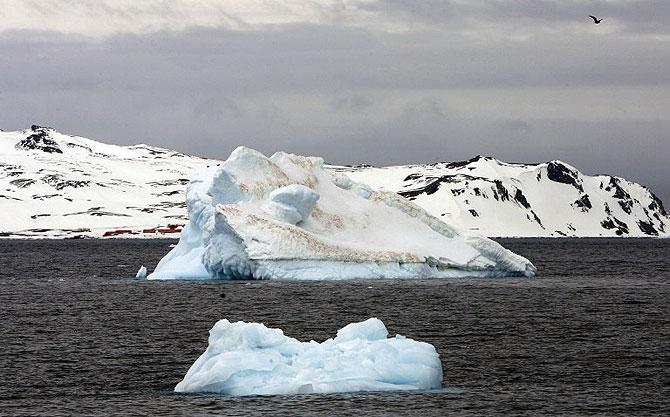One of the largest glaciers on the planet, Totten, is melting due to ocean warming, a phenomenon that demonstrates the vulnerability of East Antarctica and its role in increasing the level of the oceans
Sydney: One of the largest glaciers on the planet, Totten, is melting due to ocean warming, a phenomenon that demonstrates the vulnerability of East Antarctica and its role in increasing the level of the oceans.
ADVERTISEMENT
The Totten glacier, 120 km long and 30 km wide, is one of the largest glaciers on the planet and also one of the least understood glacier systems, Steven Rintoul, head of a scientific expedition that is measuring the waters below the ice cap, told Efe news agency.

A glacier in Antartica. Representational picture: AFP
The Australian scientist clarified that these are the first measurements of temperatures of the waters that surround Totten, located about 3,200 km south of the Australian island of Tasmania, and it therefore would be premature to imagine a link with climate change.
Rintoul said that "East Antarctica is potentially more vulnerable to changes in the ocean driven by climate change than we used to think", and can contribute to the rise in the level of oceans in a manner still unknown.
Satellite images had already proved that Totten was melting, but the study led by Rintoul demonstrated the hypothesis that warm waters are melting it from its foundations.
"We used to think the glaciers in East Antarctica were unlikely to be affected by the ocean because they were a long way away from the warm ocean waters," said Rintoul, referring to the expedition that was able to reach the front of the glacier for the first time to measure submarine waters.
Totten, moreover, sits on a bedrock well below the sea level, exposing it more to the warm waters, in a similar process that occurs in Antarctic areas south of South America and which cannot be reversed.
The temperatures of the water off the Totten at the time of the measurements was about four degrees below zero, but the temperature much closer to the water base was three degrees warmer than the freezing point, which depends on the depth of the ocean, said the scientist.
Rintoul, leader of the Australian Antarctic Division expedition, clarified that the Totten will not melt away completely.
With the samples in the laboratories, new studies and projects to develop new measurement techniques, Rintoul hopes to determine in the future how much glacial water is present in the seas and find the “chemical signature” of Totten.
The expert is also trying to find out how long the Antarctic waters can contribute to "draining" carbon dioxide (CO2) out of the atmosphere.
According to Rintoul, the Antarctic seas as absorbers of CO2 is definitely helpful, but it comes at a cost, which is the acidification of the oceans.
Changes in the chemistry of the oceans have implications on marine life, among other ecosystem components. added the expert.
 Subscribe today by clicking the link and stay updated with the latest news!" Click here!
Subscribe today by clicking the link and stay updated with the latest news!" Click here!






